Tropical Ecology and Conservation: Ecuador
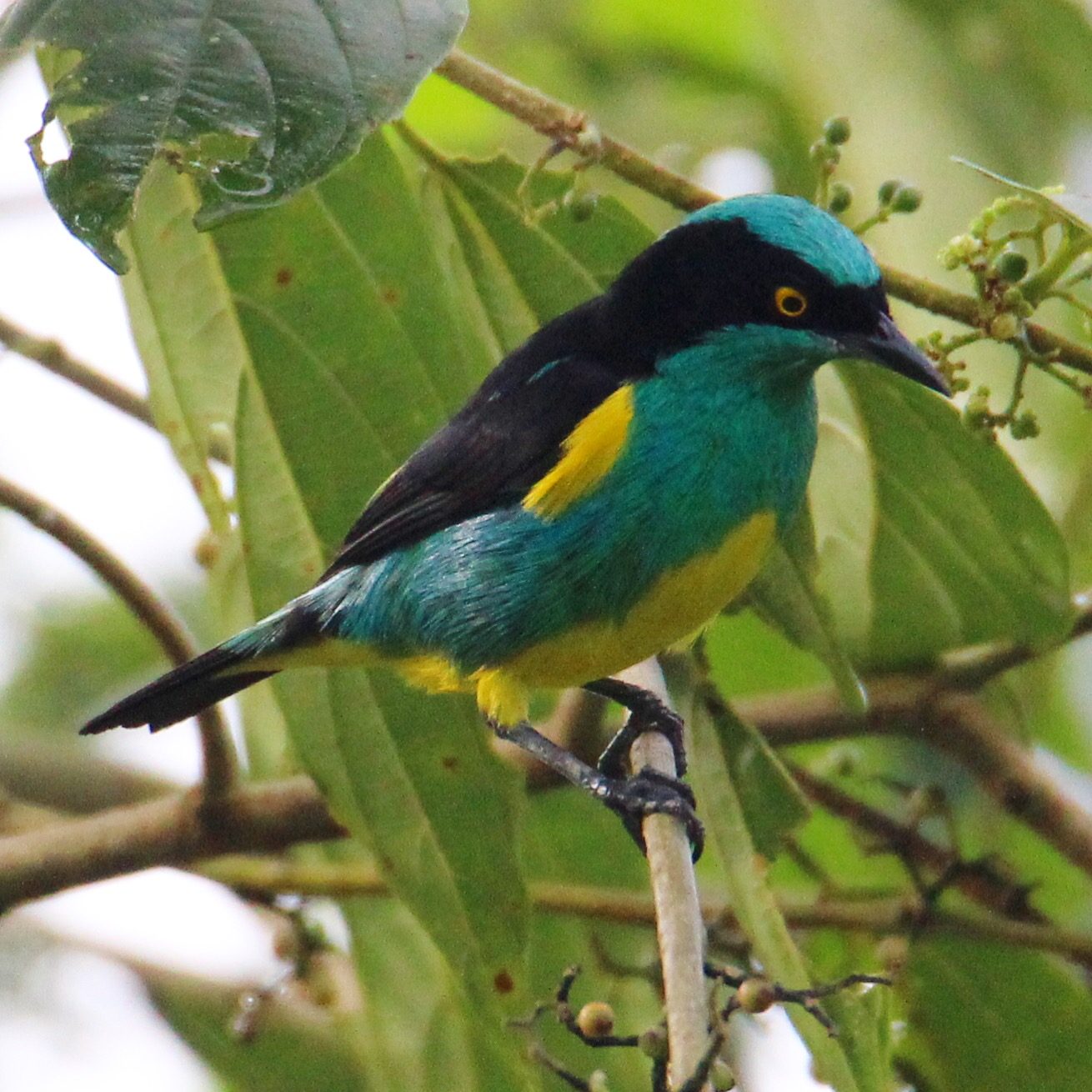
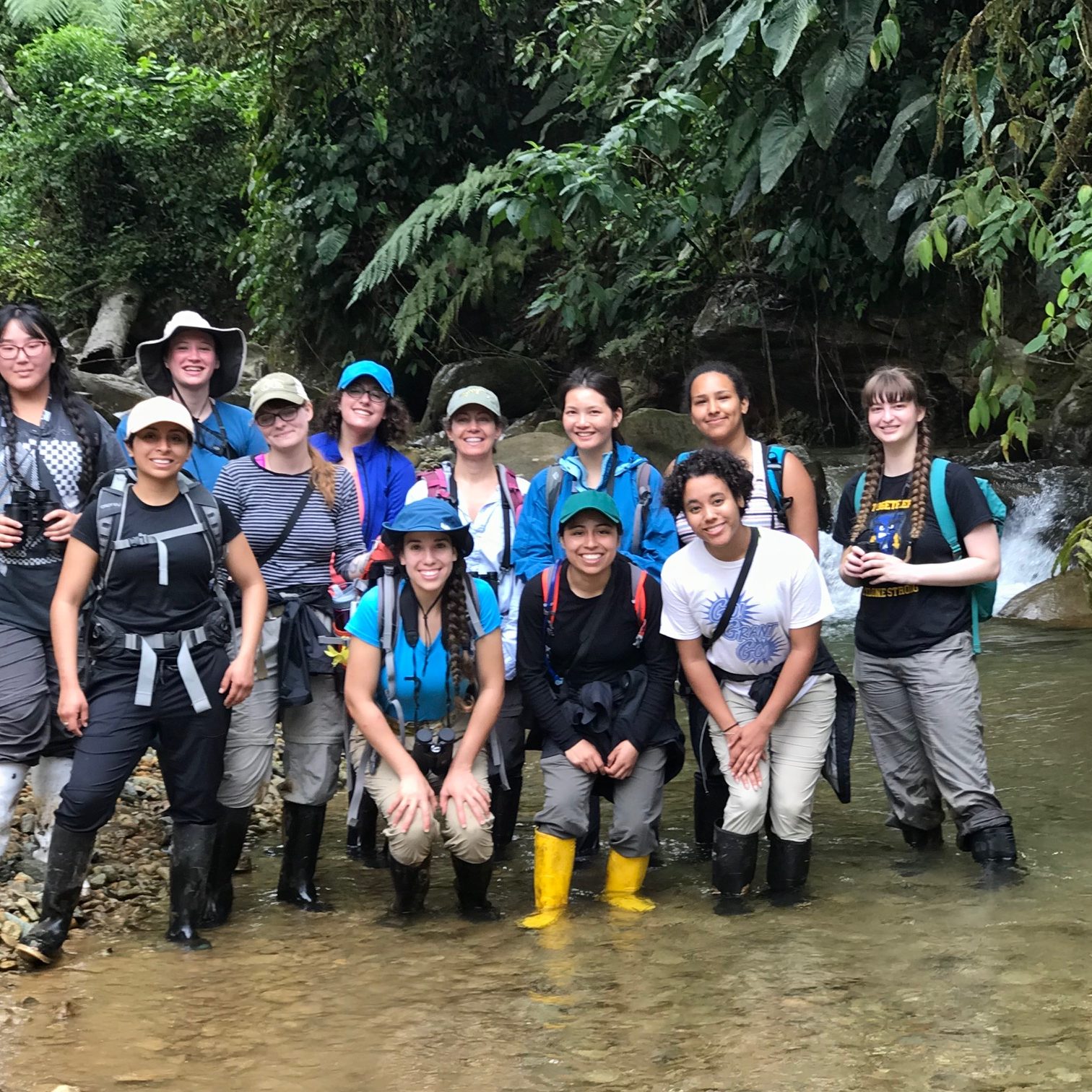
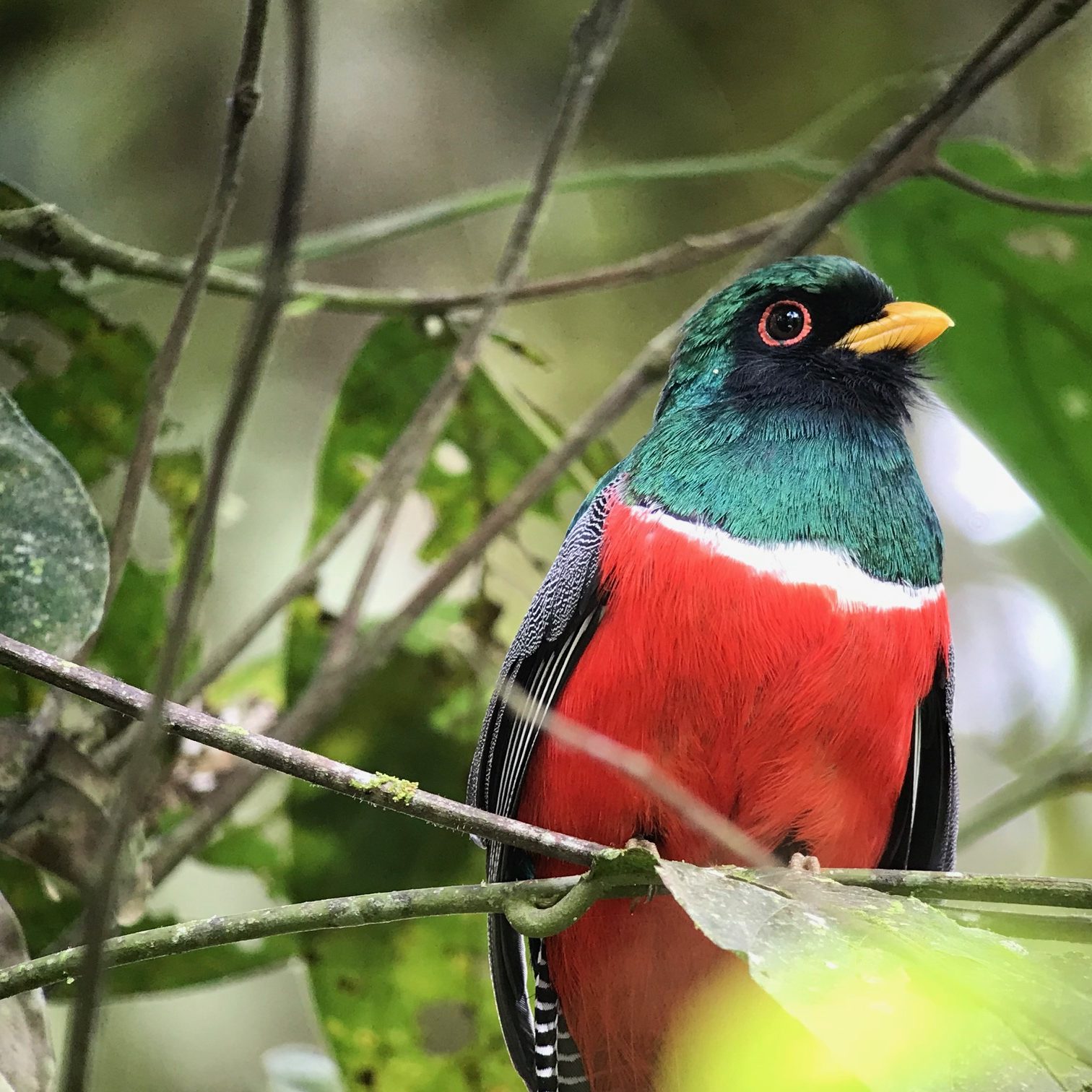
Over spring break (2018) I took eleven Biology majors from Mills College to the western slope of the Andes. We spent an incredible week based in Mindo, Ecuador, with Efrain Toapanta (naturalist extraordinaire) and Molly Brown (host/planner extraordinaire). Our goals were to seek out some of the spectacular wildlife and plants that make this such an ecologically fascinating place, learn about local conservation efforts, and put in a few days of service work on one of the reserves. Below is a little information about our wonderful week in Ecuador.
This course (Bio 147) is an upper division elective for students majoring in Biology, Environmental Sciences or Environmental Studies. It is offered every other spring semester.
Day 1: Quito
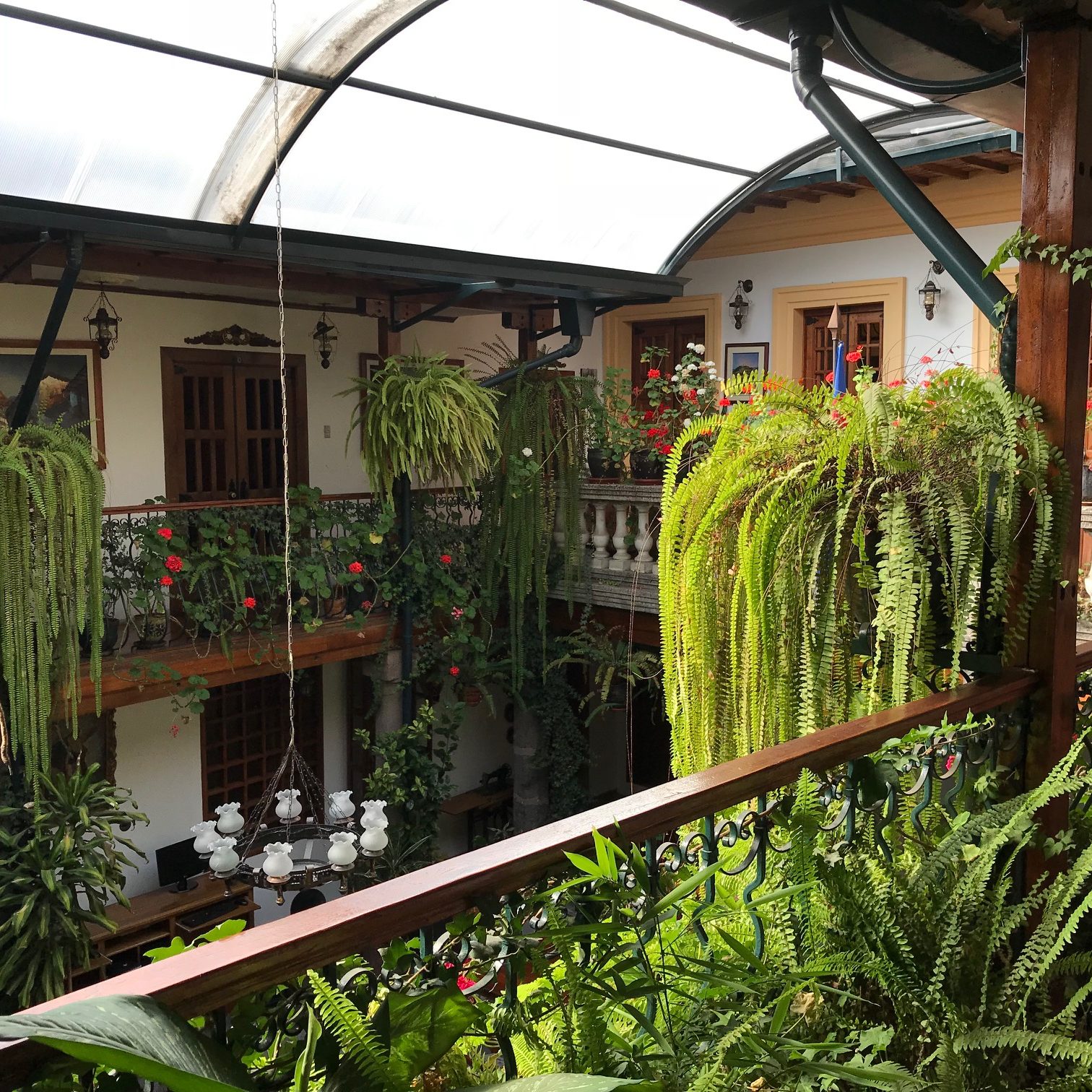
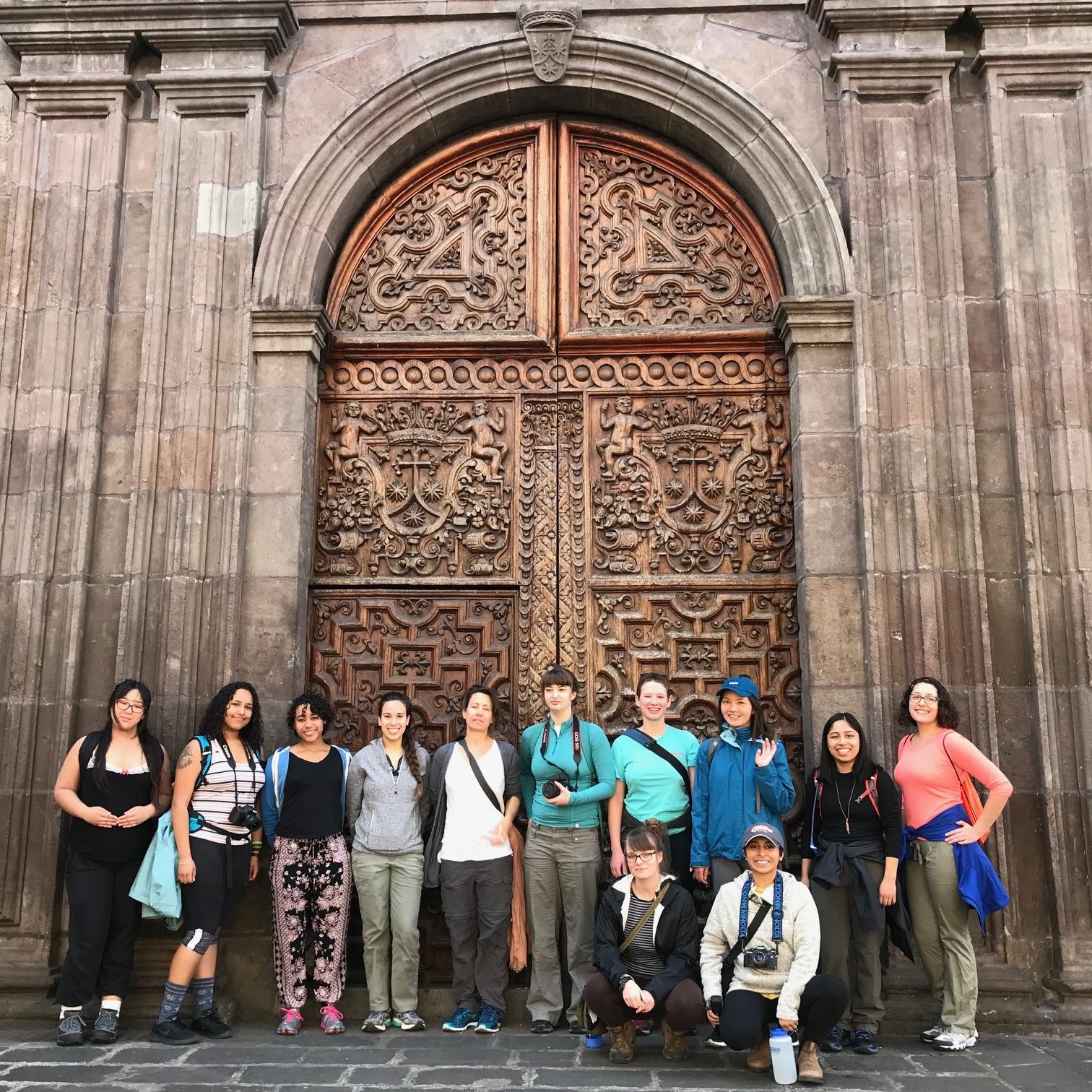
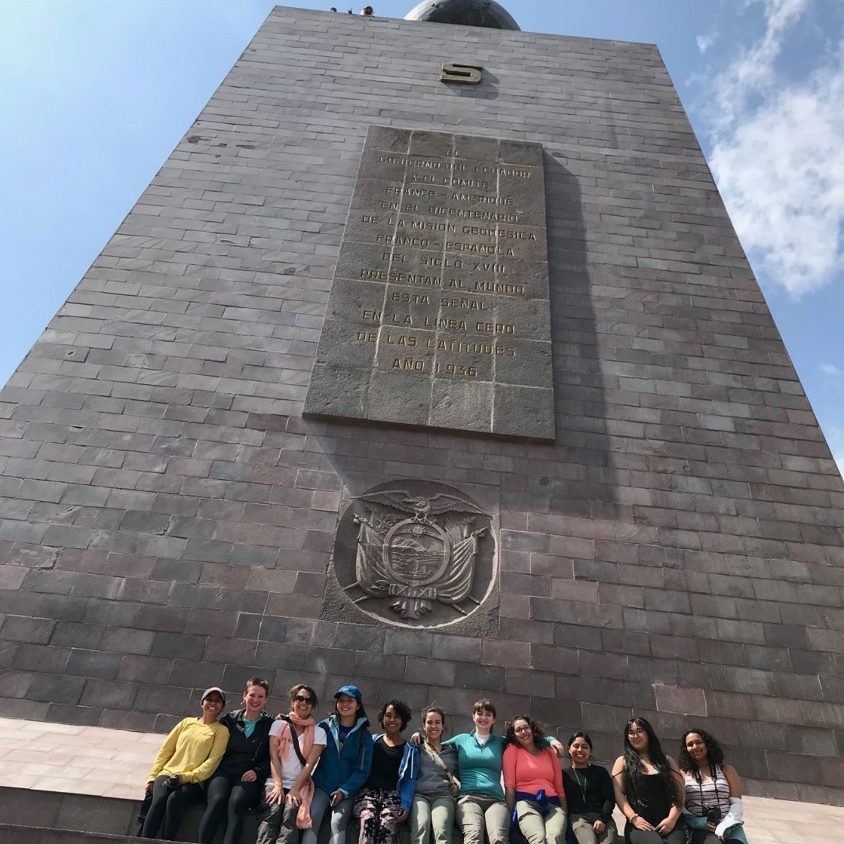
Left: We spent one night in the lovely Hotel San Francisco de Quito. This hotel was built in 1698 and has a beautiful plant-filled courtyard where we ate breakfast. Center: We spent the morning exploring Old Town (Centro Historico), Quito. The city was built on Incan ruins in early 1500s and today the narrow streets are lined by very old churches and convents. This is all of us standing in front of a door typical of the neighborhood's architecture. Right: The class at the monument on the Equator. We were in the southern hemisphere in this photograph. We crossed over the equator several times each day during our time there.
Day 2: Rio Silanche Reserve
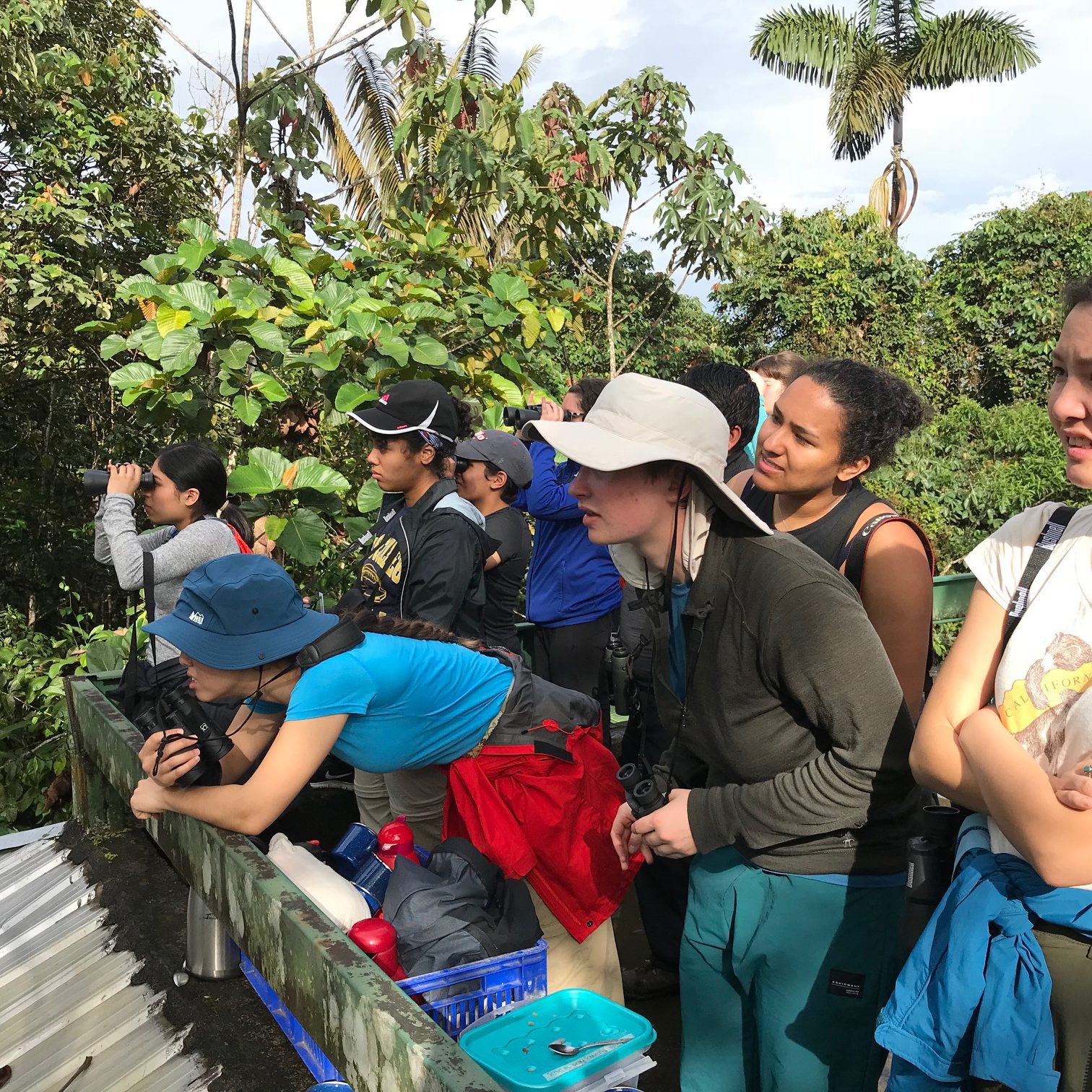
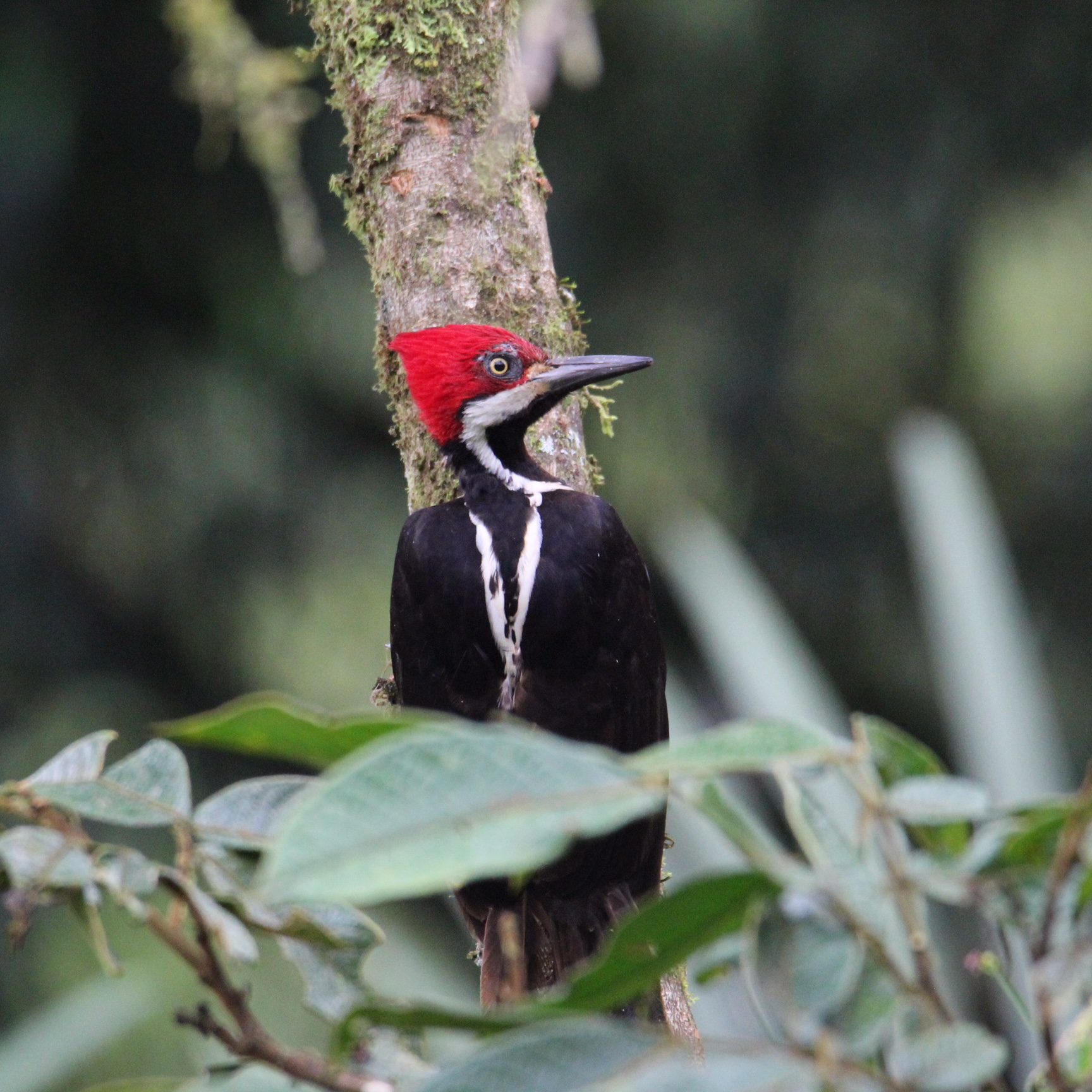
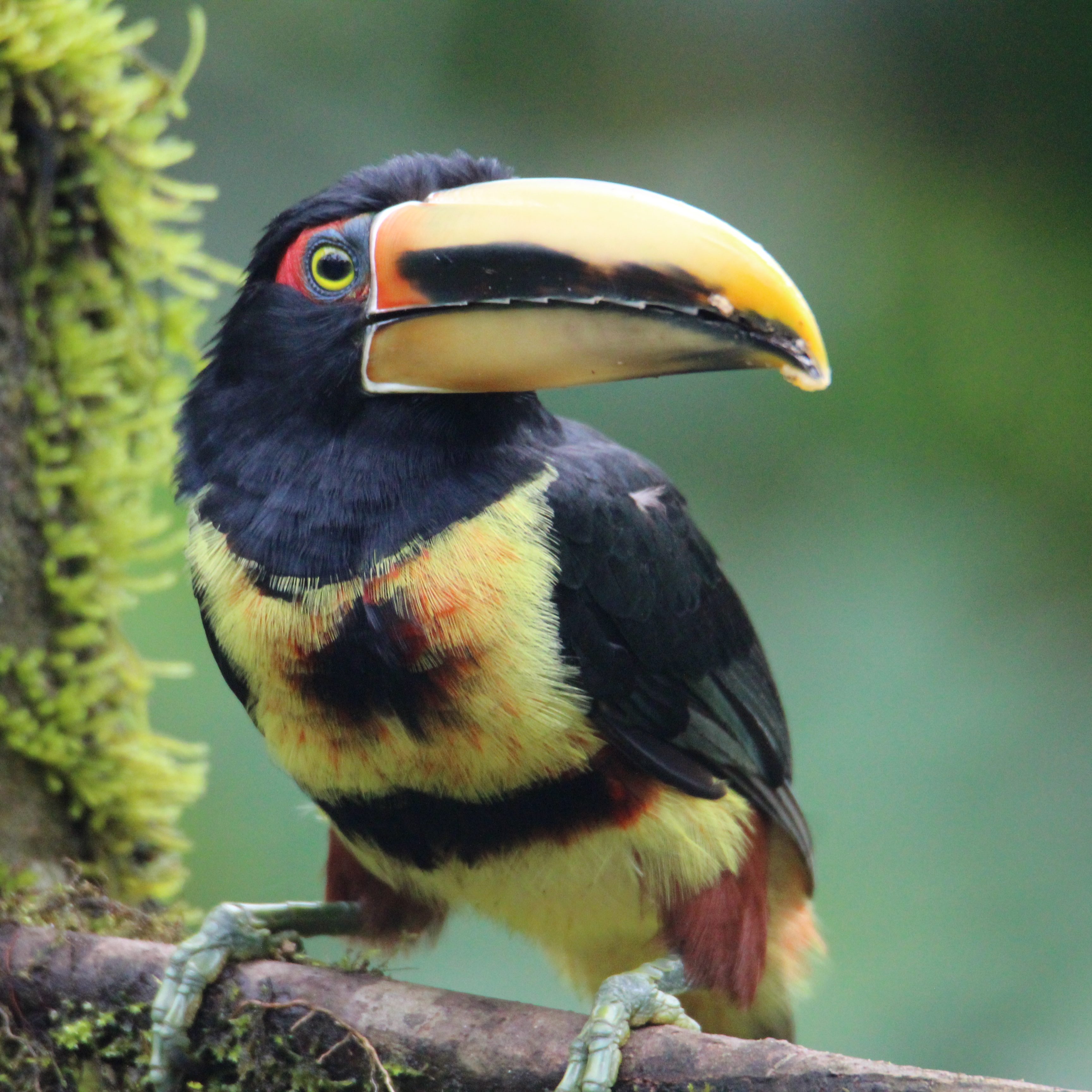
Left: Students getting their first looks at some of the extraordinary bird diversity in Ecuador from atop a viewing platform. We watched birds, ate banana bread and drank coffee from this vantage point. Center: Guayaquil woodpecker (female). Right: Collared aracari.
This is a small reserve surrounded by land that had been converted from forest to agricultural use. The topic of the day was the value of small reserves, which species they can protect and which they cannot, and edge effects.
Day 2 (cont.): Mariposario and night hike
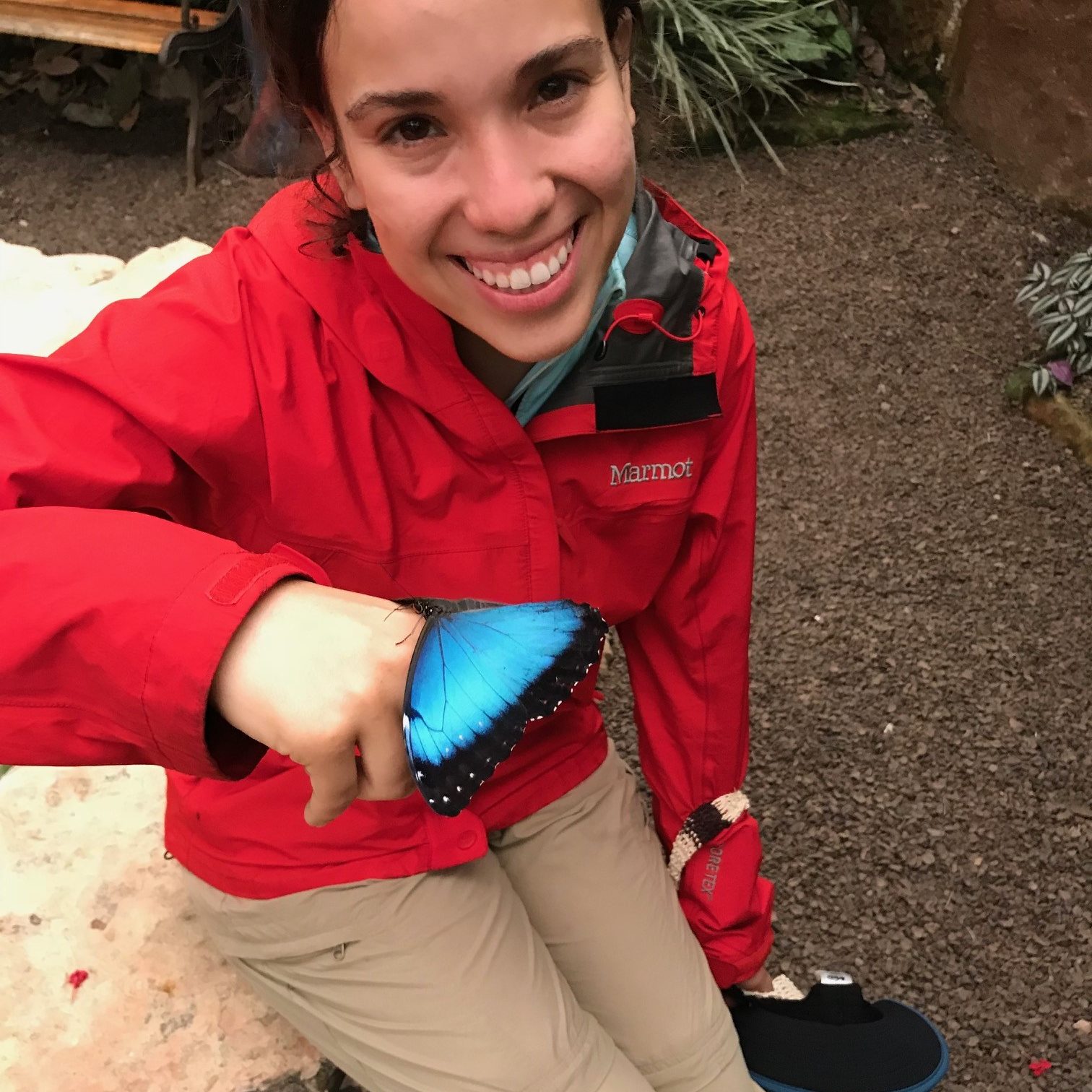
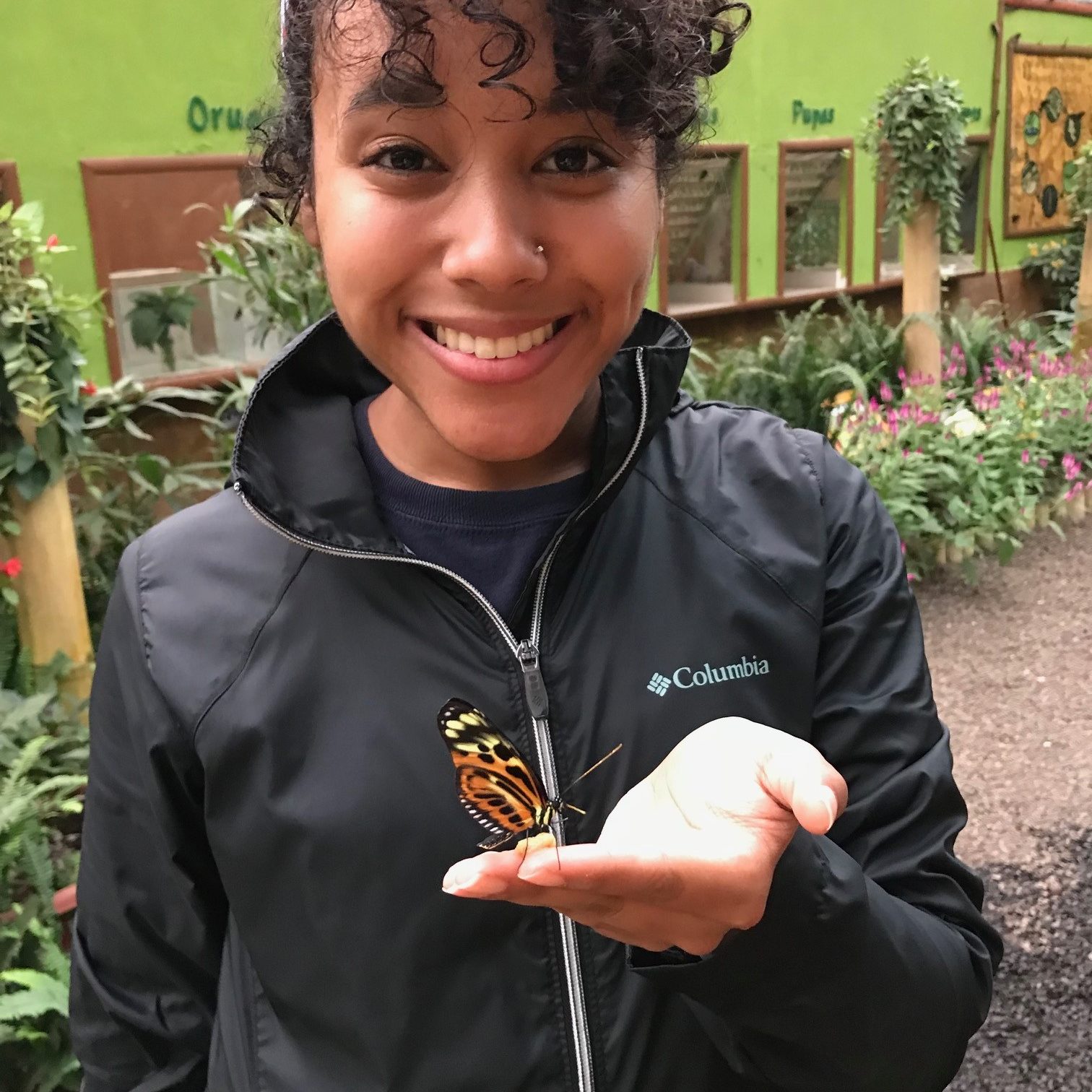
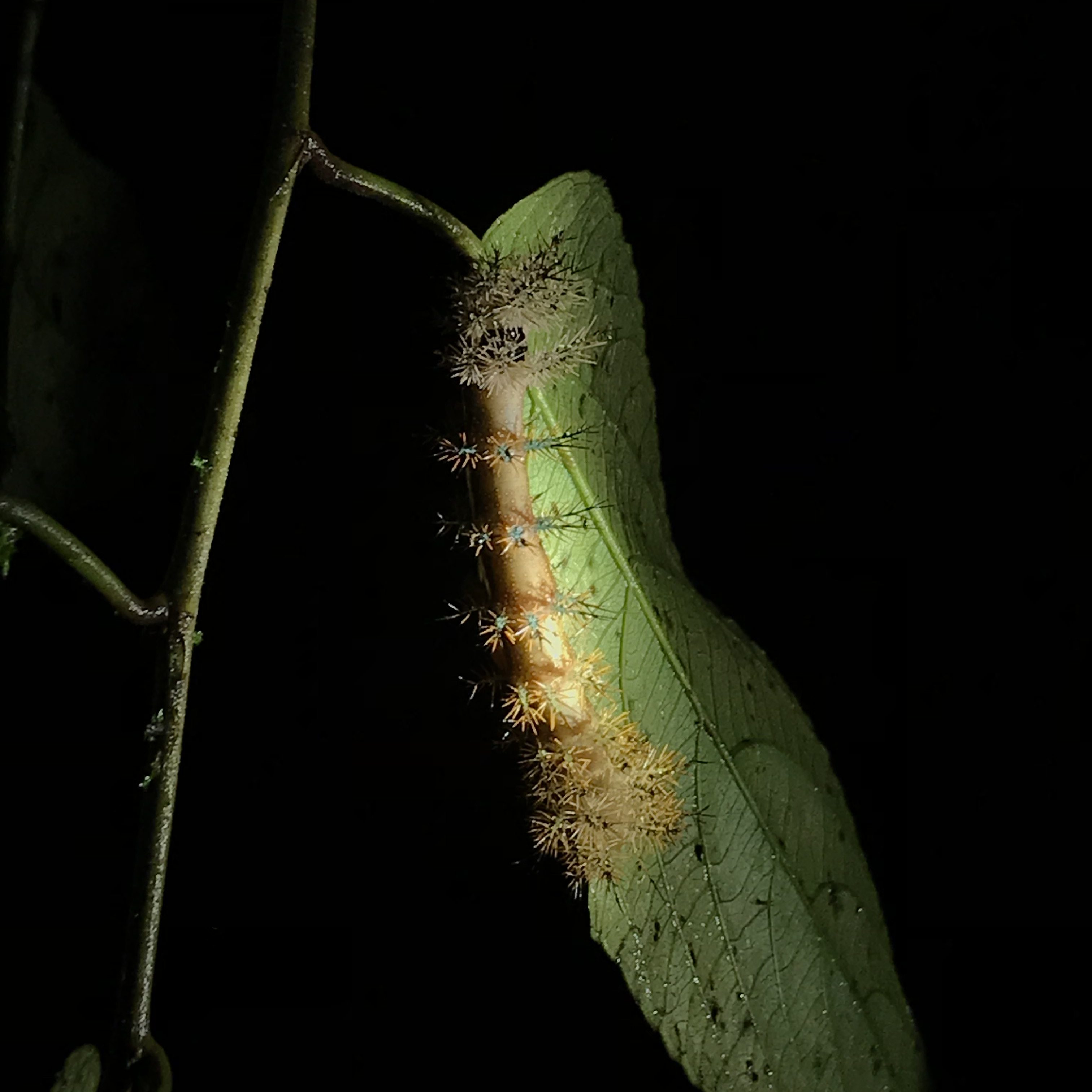
Left and Center: That afternoon we went to the Mariposario (butterfly farm). Right: That evening some of us went for a night hike and saw frogs, whip scorpions, spiders and this caterpillar which is spectacularly decorated and delivers a very painful sting (as verified via personal experience by Alex Luna).
Day 3: Service work at the Milpe reserve
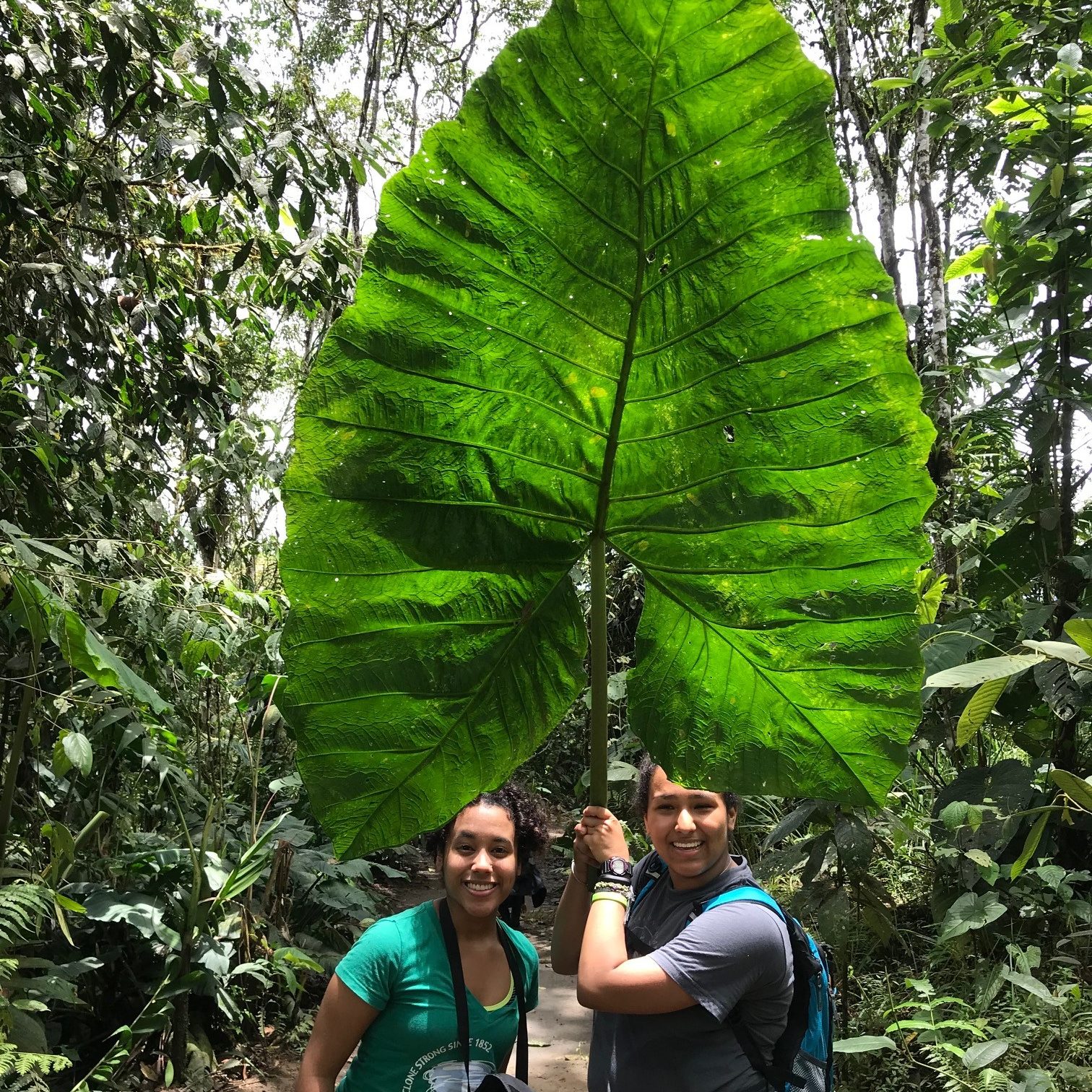
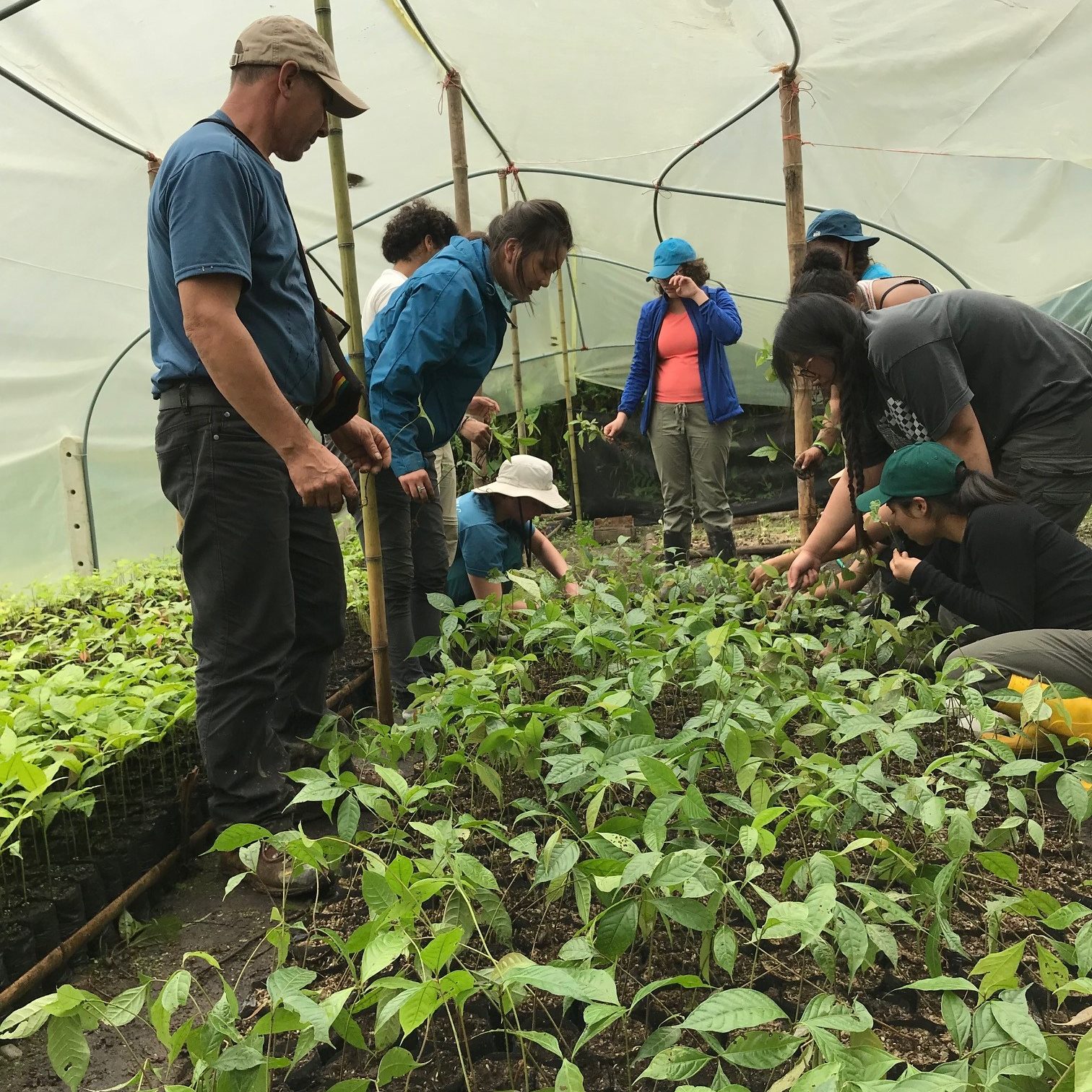
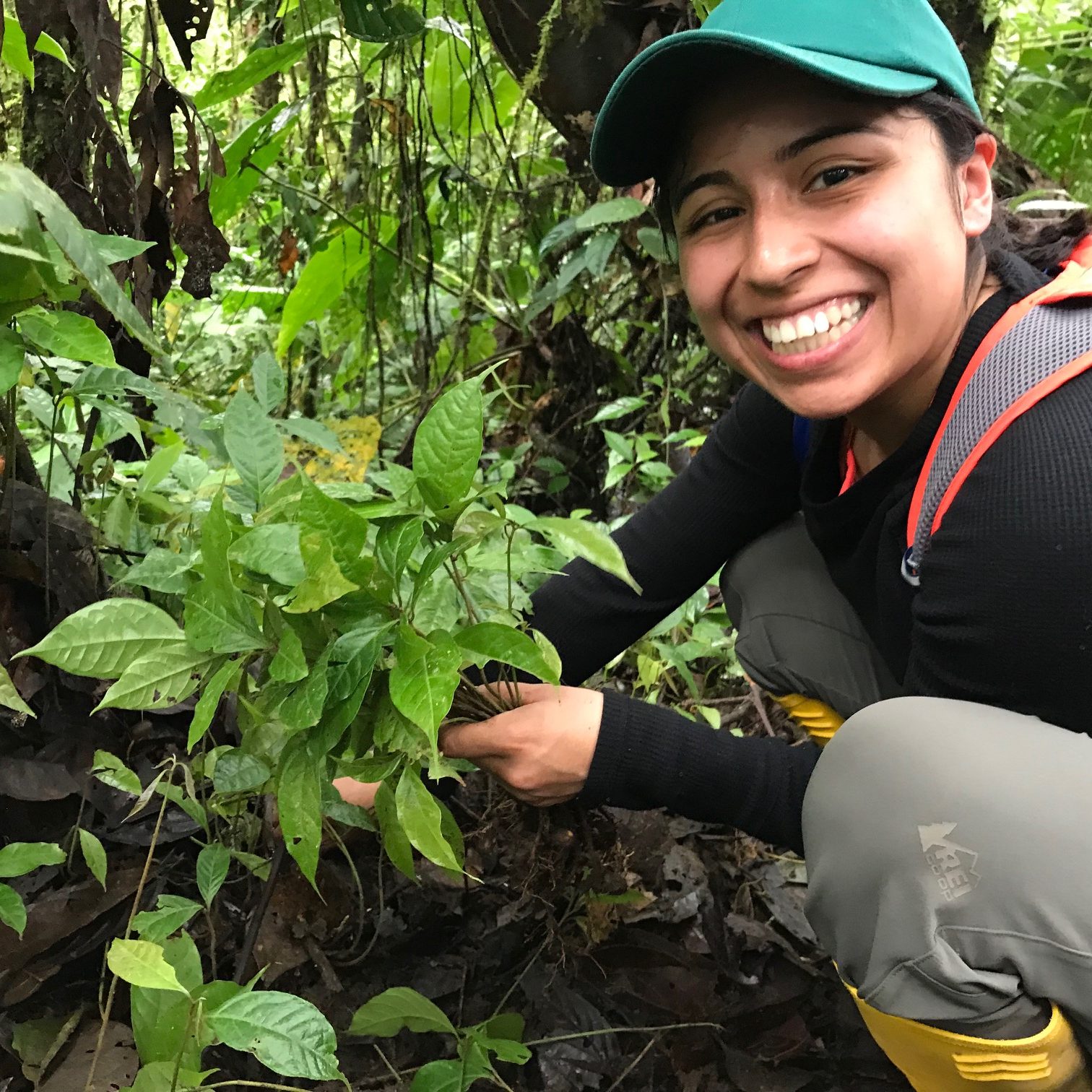
We spent this day clearing trails, bagging soil for tree seedlings, and planting wild avocado seedlings to reforest the edges of the Milpe reserve. We then had a great lunch at the reserve while we watched hummingbirds and played with their elderly labrador retriever.
The primary goal of this day was service work. In addition, we talked about community-based conservation efforts and the multi-generational conservation efforts we saw.
Day 4: Long-wattled umbrella bird and more service work
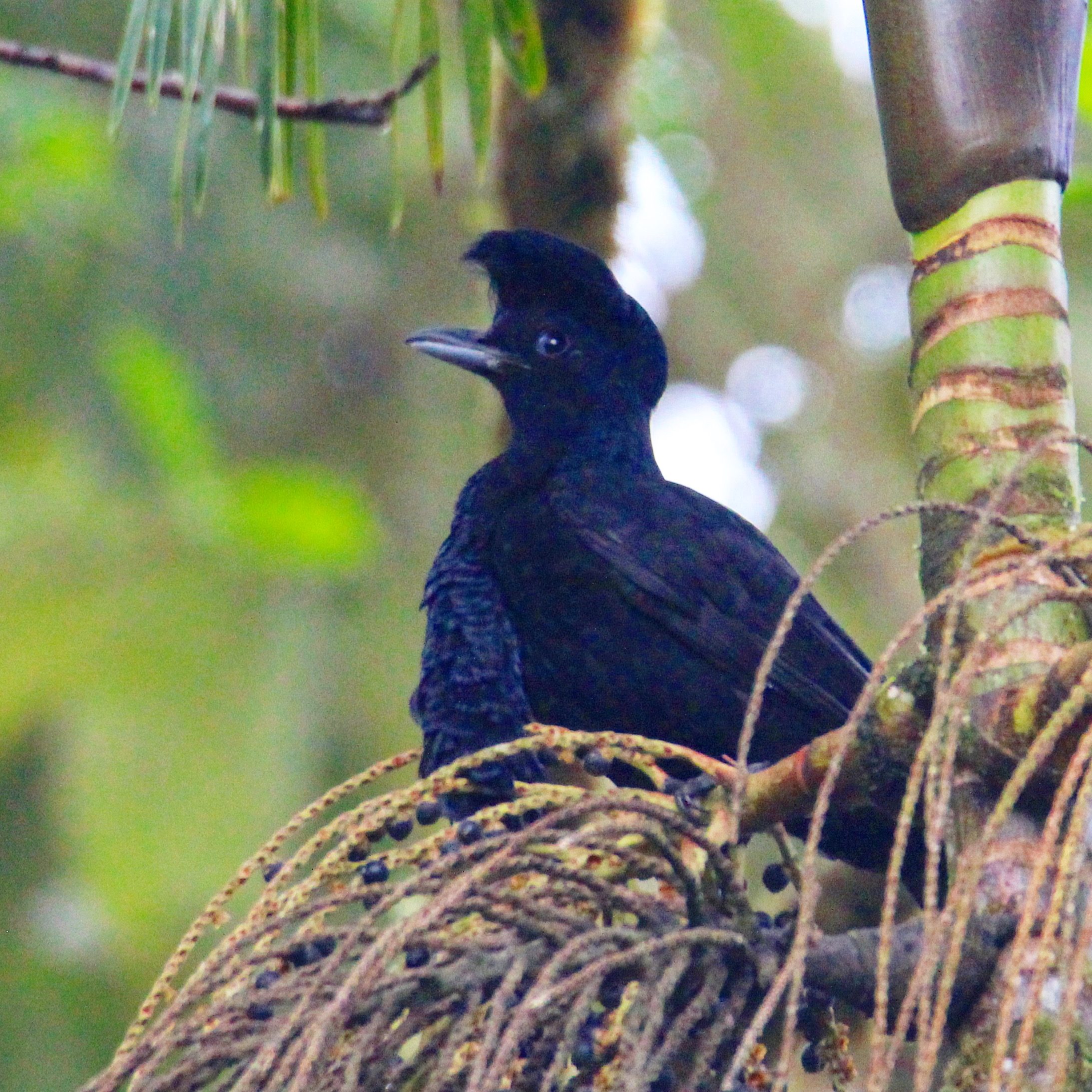
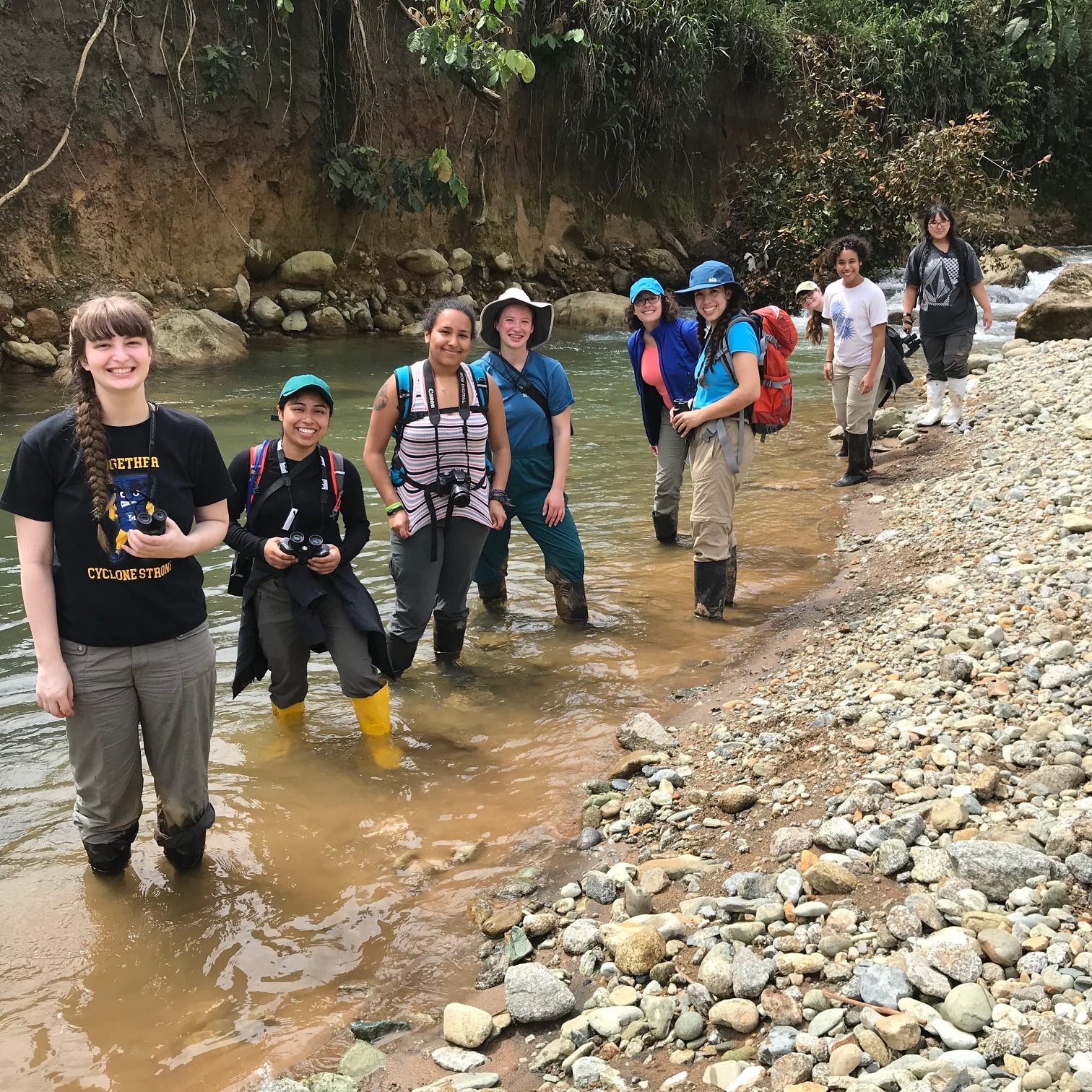
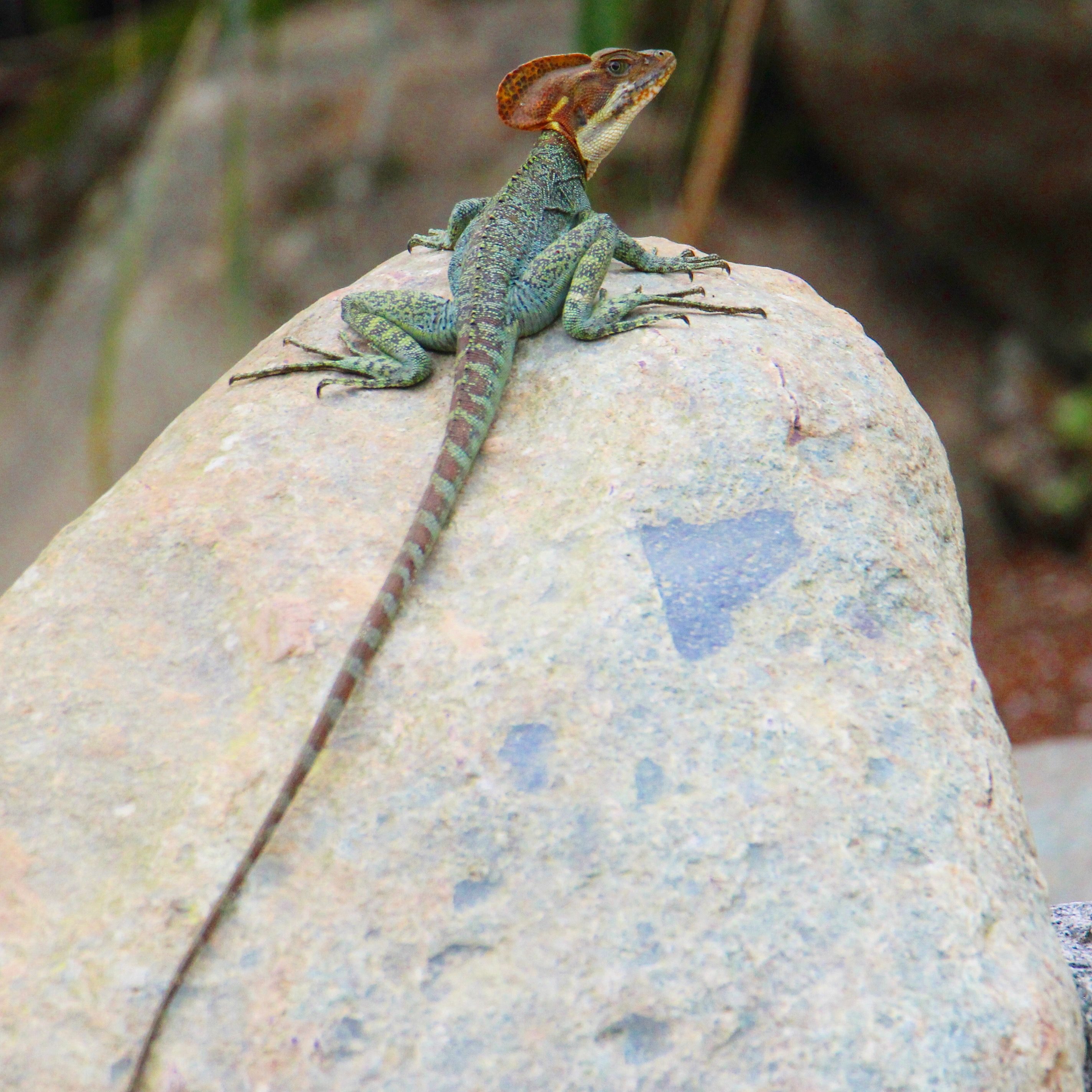
We started the day at a long-wattled umbrella bird lek. We got lucky and found one male who patiently ate palm fruit in front of us for a long time (left) and two females. We had breakfast at the home of the family that owns this land, splashed around in the Rio Blanco (center) where we saw a large basilisk lizard (right), then headed back to Milpe for more tree planting.
On this day, the topic was the role of conservation in bringing economic prosperity and stability to remote areas that have few options other than extractive resource use, an often highly unstable endeavor. We then returned to Milpe to plant trees and continued our conversation about reserve size and corridors that connect them. The Milpe reserve is connected to others via naturally-occurring habitat corridors (rivers) that are much more effective than human-made corridors.
Day 5: Paz de las Aves
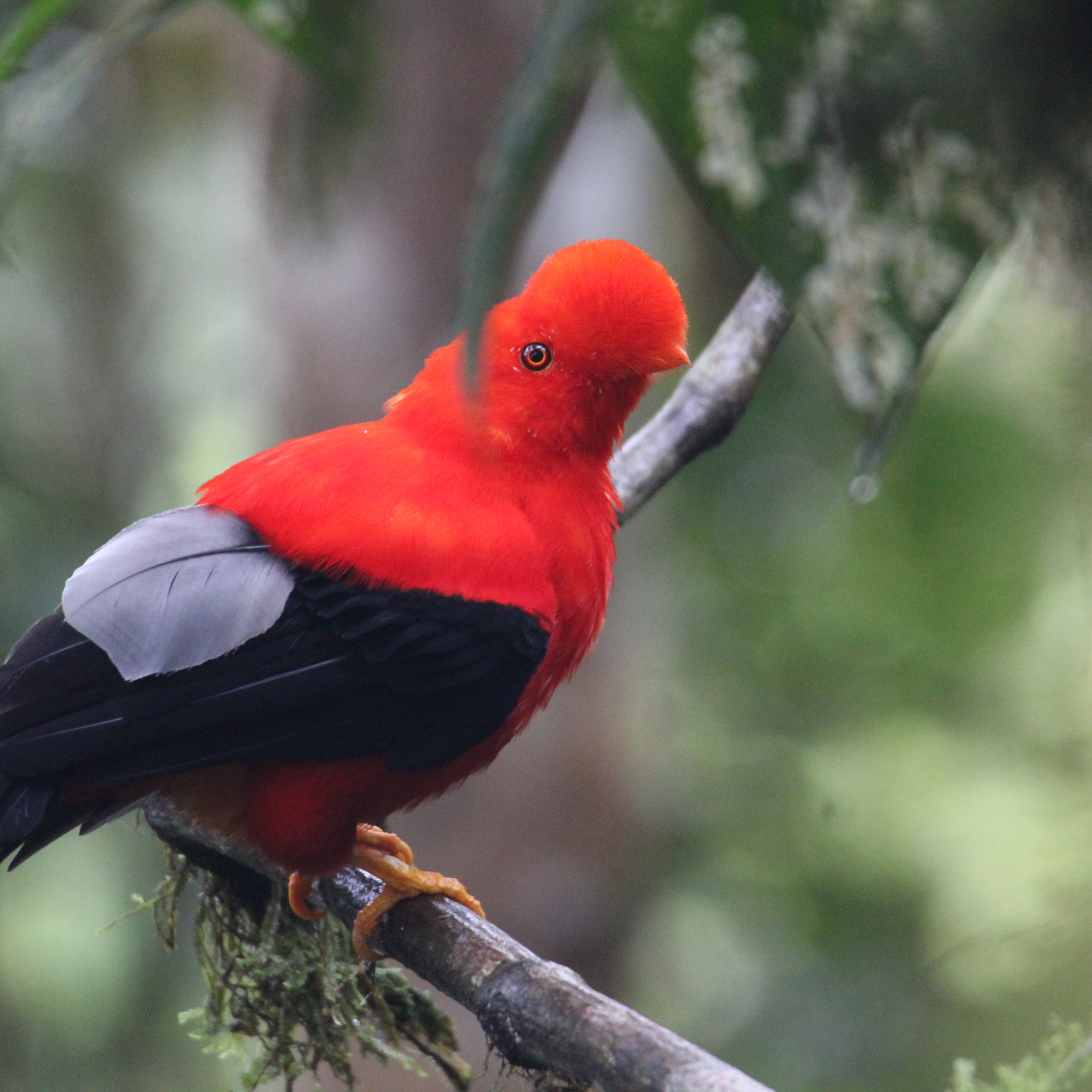
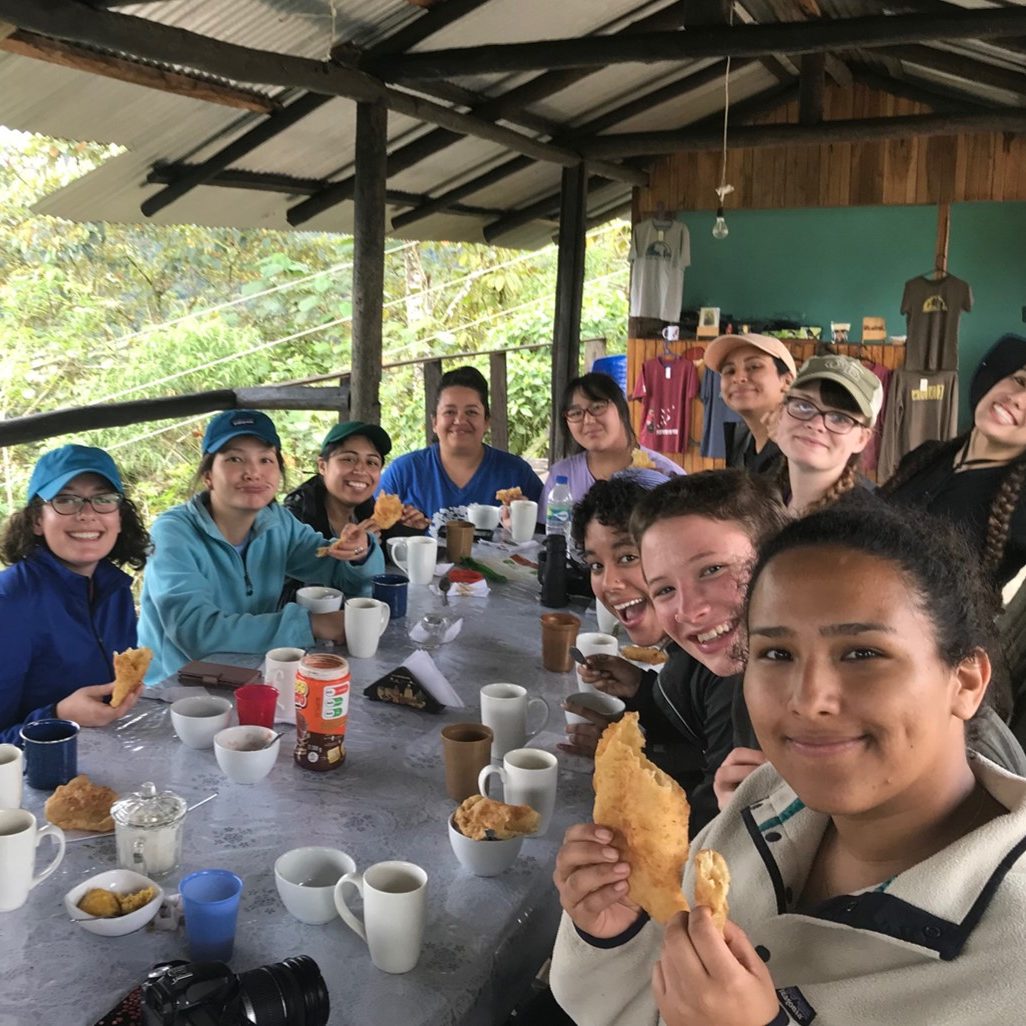
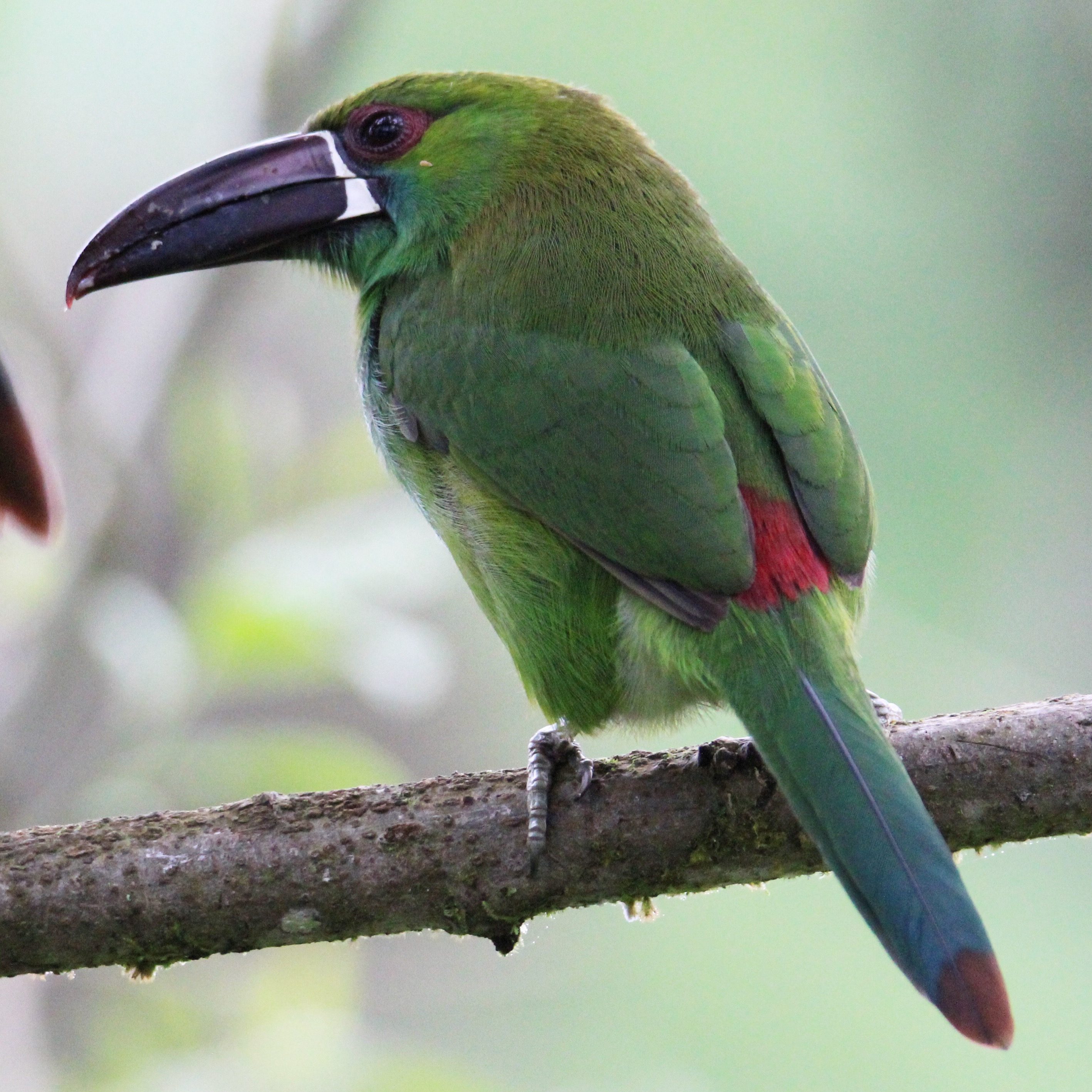
We began the morning in a blind watching gorgeous Andean cock-of-the-rock males (left) displaying for females who seemed only vaguely interested in their squawking. We moved slowly up the road, watching golden-headed quetzals, three antpitta species, trogons and many other birds. We ate a delicious breakfast on Angel and Rodrigo's porch (center), overlooking ridges covered in cloud forest. Some other highlights of the day were the crimson-rumped toucanet (right), toucan barbet and blue-winged mountain tanager (photos of those are on the Photos page).
The topic for this day was the ecological and evolutionary processes that have generated so much diversity in the tropics and the unique contribution of endemic species to global diversity. We also talked about how diversity (and the loss of diversity) affects the stability and resilience of ecological communities and ecosystem processes.
Day 6: Maquipucuna Reserve
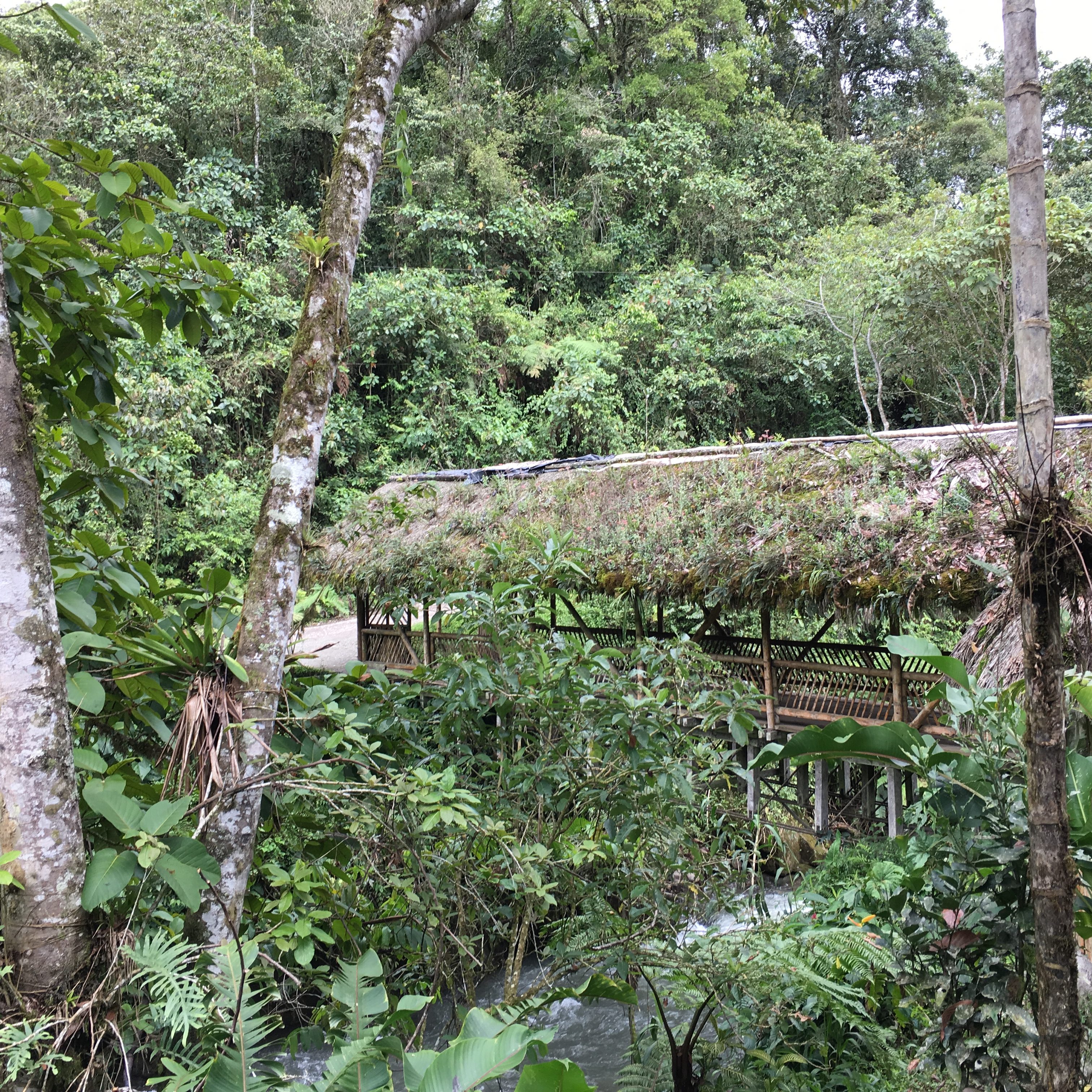
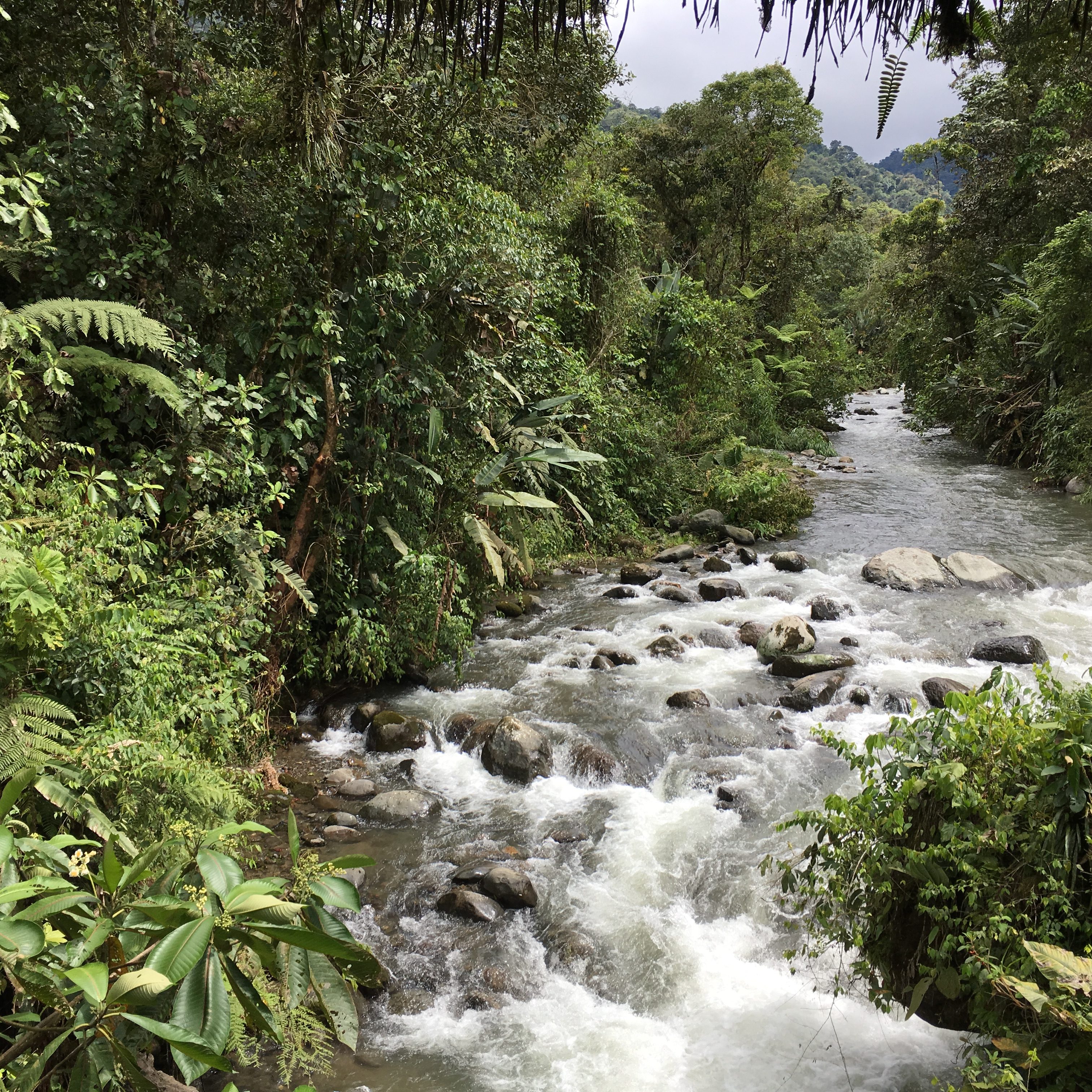
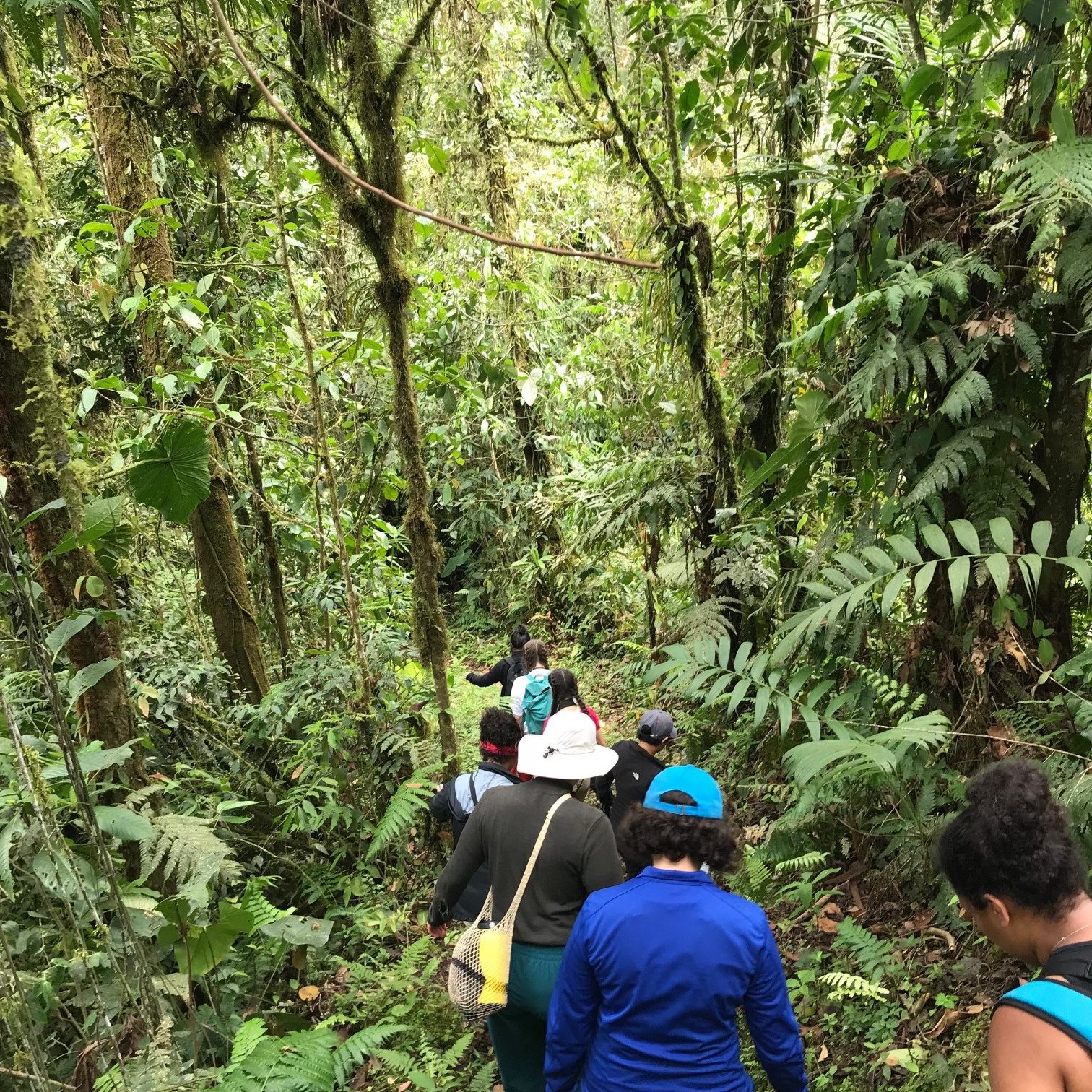
On our final day we visited the Maquipucuna Reserve. This was the largest reserve we visited (6,000 ha, surrounded by other protected areas) and home to some of the largest animals in the cloud forest, e.g., spectacled (aka Andean short-faced) bears and large cats. The entrance to the reserve is a lovely covered bridge (left) over the Rio Alambi (center). We hiked through both primary and secondary forest (right).
The topic for this final day was how even seemingly small barriers can pose real risks to wildlife populations. In particular, we focused on how a loss of genetic diversity can imperil populations that are not currently in decline. We also talked about the important role of top predators as keystone species.
Casa Divina, our home away from home!
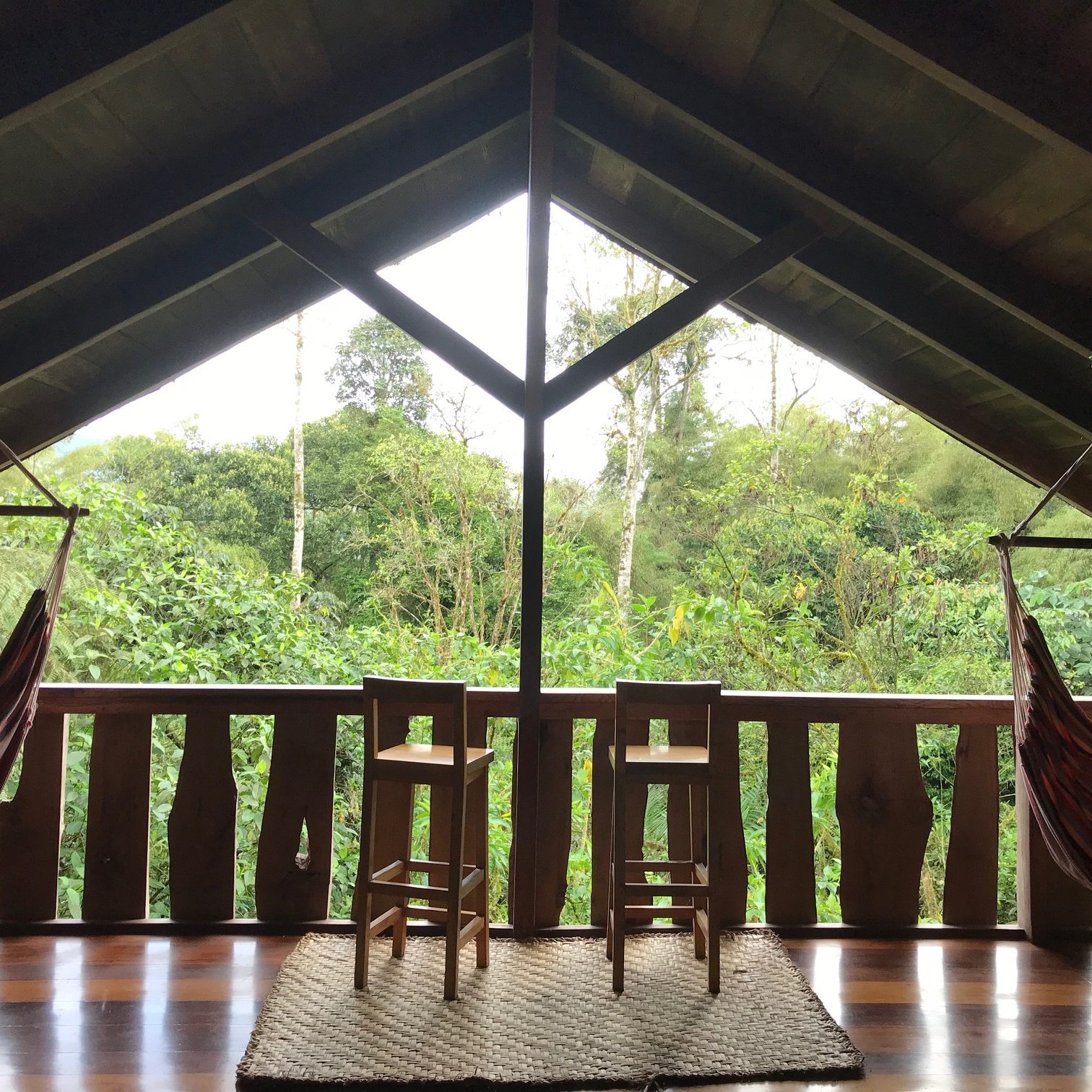
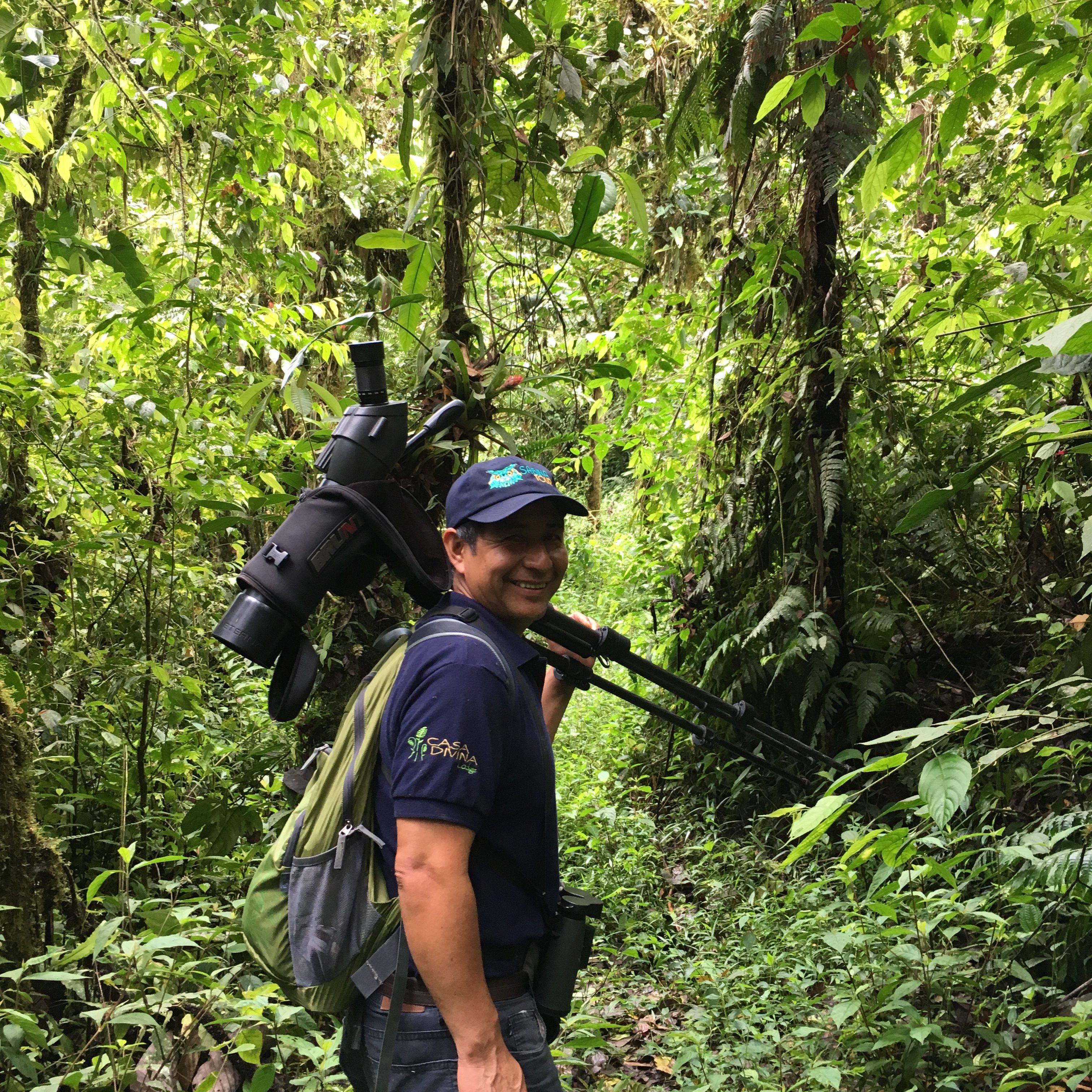
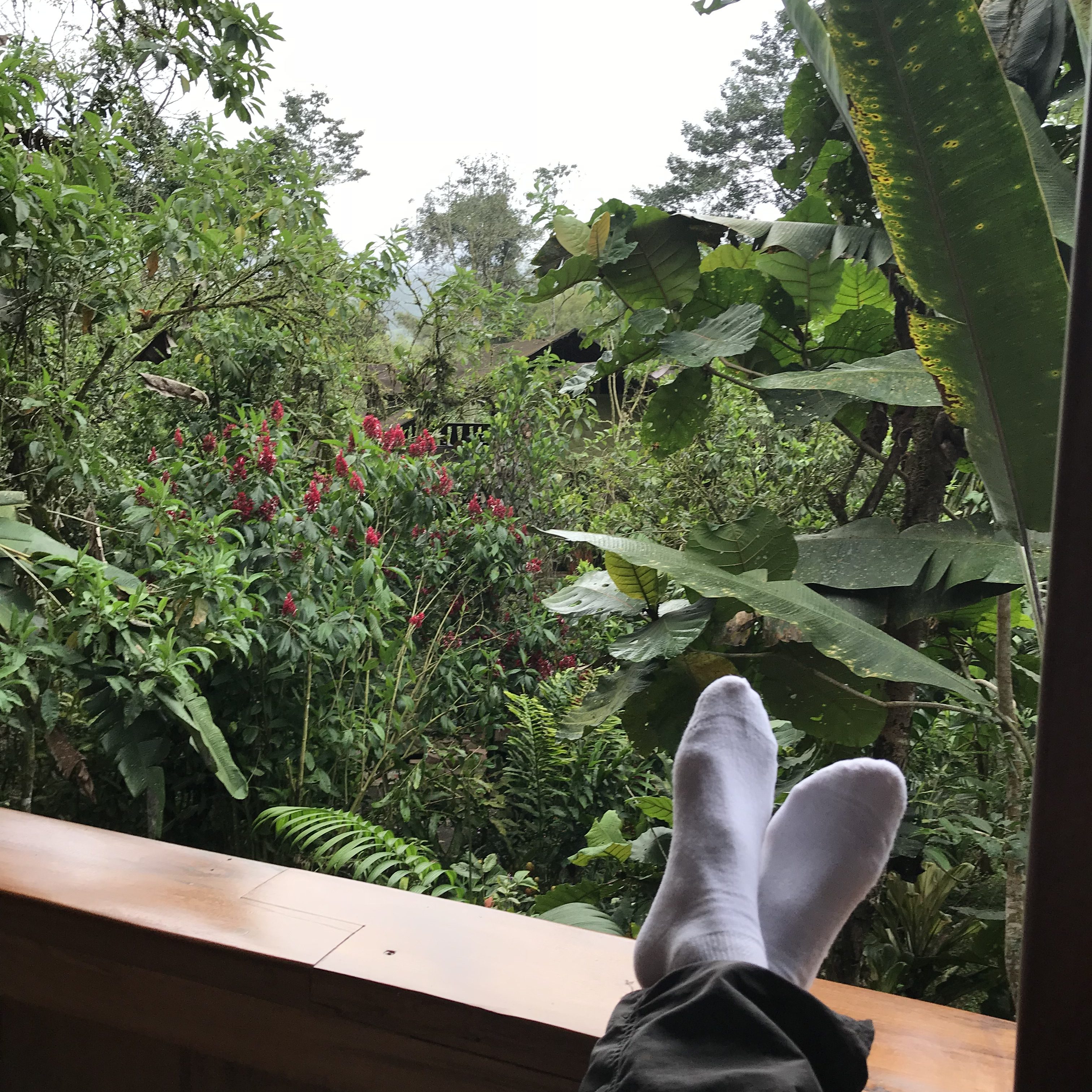
We stayed with Efrain Toapanta and Molly Brown in their wonderful lodge, Casa Divina. This place is IDEAL. The lodge itself, which Efrain built, is gorgeous and so well designed. There is a covered viewing platform on the third floor which we used as our classroom (left). The food is excellent and Molly is so welcoming and warm. Efrain (center) is an exceptional birder and naturalist, generous with his knowledge, thoughtful and kind. We could not have asked for a better guide and temporary home (left). Thank you, Efrain and Molly!